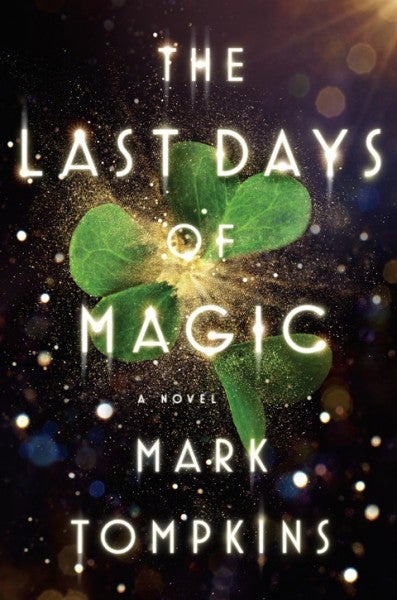
The inspiration for Mark Tompkins‘ debut novel dates back to a trip to Ireland a decade ago, when, lost on the back roads of County Clare, he came across a small castle. Framed on the wall of the castle’s tower was the legend of Red Mary, which led him on a long journey to research, write, and publish a novel blending historical events with magic and mysticism. That journey will reach its apex on March 1st, when Tompkins’ book “The Last Days of Magic” hits shelves.
Aspen Words, a literary arts program at the Aspen Institute, was present for much of the journey, hosting Tompkins in writing workshops at the Summer Words literary festival and pairing him with a professional editor through its Editing Room program. On the eve of the book’s launch, Aspen Words sat down with Tompkins for a conversation about writing and the publishing process.
Aspen Words: You came to novel writing later in life, having worked as an entrepreneur for most of your professional career. Why did you finally start?
Mark Tompkins: Writing a novel is a major decision for someone who didn’t initially take the path of going into creative writing and getting an MFA. It’s a complicated, long process. Then, if you finish the novel, you will find out if it’s any good, which is itself daunting. It took me a while to work up the courage to do it.
From grade school through college, I was told that creative writing would be impossible for me due to my dyslexia. But writing was a compulsion. Once unfettered by academic constraints, I ventured into poetry, which felt approachable because it struck me as bad grammar raised to an art form. Photography was another creative outlet, as was writing nonfiction. However, writing a novel was always out there as the ultimate goal, yet out of reach. I took some workshops and even slogged through a two-year course on grammar for adult dyslexics. Eventually it came down to either abandoning my dream or sitting down and writing. As much as I wish I had written my novel 20 years ago, I wasn’t ready until more recently.
AW: How did you decide on Ireland as the setting for your book?
MT: Faerie [the imaginary world of fairies] is in my blood, or at least Ireland is. My ancestors are from the counties of Clare and Meath, so when I decided to write a novel about magic, it had to be set in the Emerald Isle. While traveling in Ireland, I discovered a character that insisted I write about her, one who was inspired by the Celtic legend of Red Mary. This led me to base the book on the premise that all the old legends, myths, and faerie tales were true and the magical beings in them co-existed with humans during medieval times. In those tales, faeries were depicted as large and powerful; they even procreated with humans.
AW: What kind of research did you do for the book?
MT: One of the great things about setting the book in Ireland, England, Italy, and France is that it gave me the perfect excuse to spend a lot of time there. Being on location helped me capture the atmosphere and the nuances of those incredible places. Hanging out with pagan groups in Ireland was also a lot of fun.
I was always seeking eclectic used bookshops to rummage through for books on mythology, faeries, exorcism, and the like. My bookshelves became so crammed with tomes on witchcraft and demonology that a friend once quipped that he expected to arrive one day and find a crater shrouded in green mist where my house used to be!
AW: You brought some early versions of the book to workshop at Aspen Summer Words. How did that experience influence your writing process?
MT: I took my first writing workshop at Summer Words in 2011. For the application, I had to choose between the only two chapters I had drafted: chapter one, which was still horrible; and two, which began with the first sex scene I’d ever written (and is not even in the book anymore). So chapter two it was, which got me into the intermediate fiction workshop with Elinor Lipman. Lipman helped me fix chapter one and add a prologue.
In 2012, I had a little bit more of the novel done and attended the Summer Words workshop with Luis Urrea. That workshop was instrumental both in improving my writing and encouraging me to keep going. I had six good chapters, plus an outline, and was able to show work to the agents and editors. They all liked it, particularly Adrienne Brodeur [creative director at Aspen Words], who was still working as an editor at Houghton Mifflin Harcourt at the time. I got an email from her afterward reaffirming that she loved the novel’s concept and wanted to see it when it was done, and that was extremely reassuring. Particularly because shortly after, I went to a workshop in Wales called Milford. Milford has been around for a long time and it’s well known. Neil Gaiman went to it when he was young. The head of the workshop gave me a three-word review. No, no, no and that was it. Without the encouragement I received at Summer Words I may have stopped writing.
Caroline Tory is the program associate of marketing and communications at Aspen Words.
